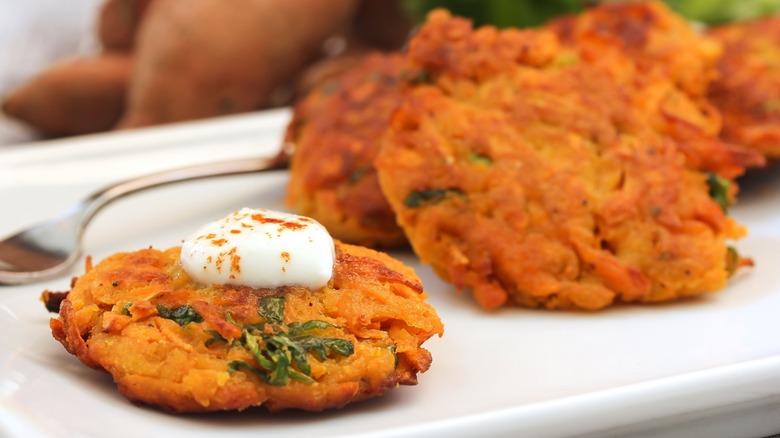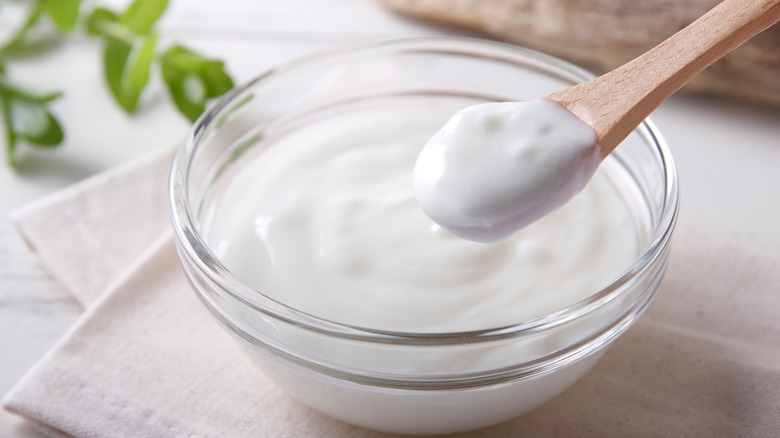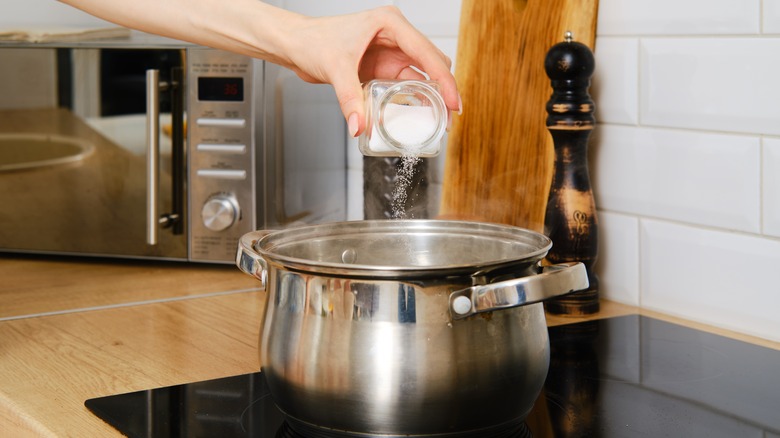Is There An Actual Measurement For A 'Dollop'?
Whether baking or cooking, precise measurements help ensure a tasty outcome. While seasoned chefs and bakers can sometimes experiment with measurements, it's usually best to follow instructions provided in recipes (per the New York Times). However, what should you do when subject to vague or unclear measurements? For example, recipes that call for a 'dollop' of ingredients leave most people scratching their heads, even though the word is highly familiar in the culinary world.
If asked, most people associate the word dollop with a very popular commercial for Daisy Sour Cream. According to the company's our story page, the brand first got its start in 1917 and prides itself on the use of fresh, wholesome ingredients. The company also proved to be quite innovative when it comes to advertising. The "Do a Dollop of Daisy" commercial, created by singer/songwriter Sarah Hickman, introduced the word into the popular lexicon thanks to the criminally catchy jingle. However, the tune did little to shed light on what exactly a dollop is.
The unclear origins of the word dollop
Language is a curious thing, as it constantly changes and evolves over time. As a result, it can be hard to pin down the exact origins of a word, even one that remains in popular usage. Accordingly, defining the exact etymology of dollop is not entirely possible, although the word does have roots in history.
For example, it appears in author John Thomson's "Etymons of English Words," published in 1826. While not much is known about the author, he did pen several other books according to Telegraph Media Group. His work includes a photographic history of Victorian London, as well as a discourse on hat-making. As for "Etymons of English Words," section 3 of the digitized version features a definition of 'Dallop,' which is described as "a deal heap, a division or small heap, refuse of straw, corn or grass, raked together into parcels called Dalleps." While not specifically related to cooking or baking, a "small heap" definitely aligns with the commonly accepted meaning of dollop. But what does a small heap equal when it comes to measurements?
Shedding a little light on ambiguous measurements
Otto Wilde, an outdoor grill manufacturer, shares some insight on puzzling measurements. If you've ever wondered how much a dash equals, many cooks agree that it's roughly 1/8 of a teaspoon. As for a pinch of something, such as salt, this is commonly understood to mean 1/16 of a teaspoon or half a dash. Measurements become even smaller with smidgens, which is half a pinch or 1/32 of a teaspoon.
Unfortunately, other measurements offer only vague instructions, such as slather. In this case, the component being slathered should be applied liberally, until complete coverage is achieved (something confirmed by The Press Democrat). Additionally, slathering can be applied to both savory and sweet recipes. As for dollop, Otto Wilde explains that the measurement is commonly understood as "a small amount" of a thicker ingredient, such as sauce, jam, or sour cream. Dollops are often spooned onto finished recipes or added to other ingredients as a recipe is being prepared. While this definition doesn't provide a precise measurement, regular practice in the kitchen is the best way to hone your skills and ensure you're using ingredients correctly.


